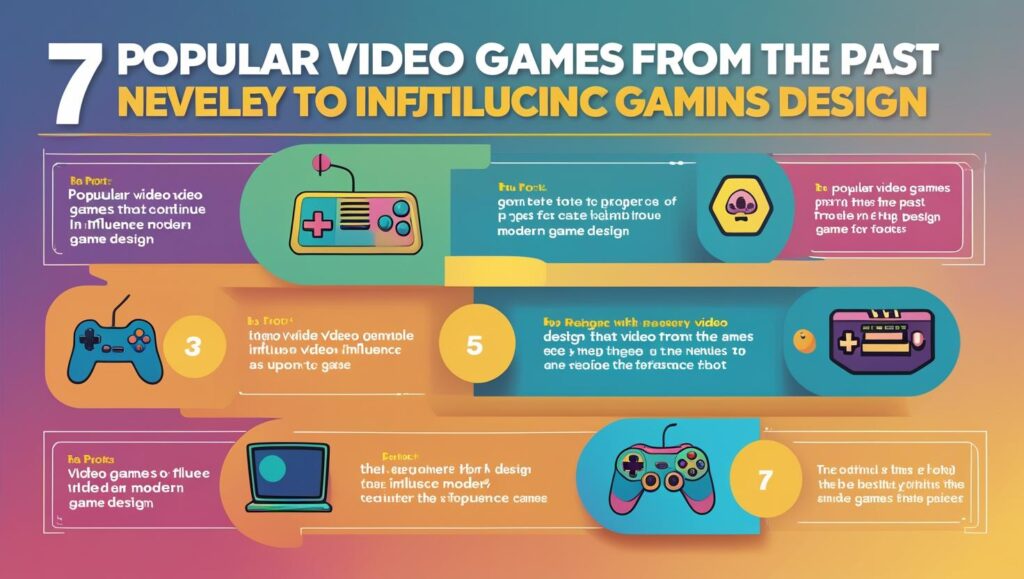7 Factors Popular Games Still Shape Gaming’s Future
Millions of people all around are constantly inspired by **popular games** in a field marked by fast development and invention. More significantly, though, how do these games affect the larger gaming environment and what pushes a game to become popular?

Having more than ten years of experience covering gaming trends, I, a senior content writer, have seen personally how successful games create standards, motivate communities, and reinvent interactive experiences—not only entertain. The reasons popular games matter, the mechanisms behind their success, and what this implies for both players and developers respectively are investigated in this paper.
Describing Popular Games: Beyond Simple Count
When we discuss well-known games, it’s easy to focus just on numbers of players or sales. While these numbers count, popularity also comes from cultural influence, lifetime, and player involvement.

Not only did games like **Minecraft**, **Fortnite**, and **Among Us** sell well; they also generated fresh social experiences, shaped streaming culture, and even set off worldwide events. Popular games turn into venues where stories develop, communities flourish, and competitive scenes change.
1. Accessibility Popularity Fuels
Accessibility is one of the basic reasons games become so popular. Easy to pick but difficult to master games draw more people. Both casual and serious players will find titles like **Candy Crush Saga** and **Call of Duty: Warzone** blend basic mechanics with strategic complexity.
Furthermore, free-to-play choices and multi-platform availability remove access restrictions, therefore enabling popular games to be inclusive and ubiquitous.
2. Ongoing Content Updates Maintain Interest
Popular games seldom ever rest on their first success. Over time, regular updates, seasonal events, and expansions keep gamers involved and committed. Think about Fortnite’s changing map and crossover events featuring pop culture icons, which always update the gameplay experience.
This continuous cycle of creation generates excitement, increases player retention, and creates an active community feeling appreciated.
3. Excellent Community Involvement Results in Longevity
Popular games’ pulse is community. Those who give player comments top priority and create interactive environments usually find their games flourish for longer.
Encouragement of player cooperation, tournament hosting, and user-generated content support has created enormous communities out of games like League of Legends and World of Warcraft. These communities foster social relationships that strengthen player allegiance.
4. Esports Appeal and Competitive Nature
Popularity of a game is much influenced by its competitive gameplay. Games with fair, skill-based competitiveness—like Valorant or Dota 2—appeal not only to casual gamers but also to aspirant professionals.
Esports have made popular games spectator sports, attracting millions of viewers online and so validating gaming as a career. This competitive layer brings thrills and stimulates the expansion of the game’s ecology.
5. Game Design Innovations and Creativity
Popular games sometimes challenge convention with creative ideas, narrative, or graphic design. For instance, Minecraft’s open-world sandbox style released creative potential not before possible in games.
Popular games stand out from the rest of the market in terms of innovation, which grabs the interest of media and players equally. Many times, these artistic innovations influence next projects and change industrial trends.
6. Marketing and Influencer Collaborations
Many of the well-known games are based on a clever marketing technique. Working with streamers and influencers generates real buzz and efficiently reaches niche markets.
Thanks in great part to streamer exposure, games like Among Us exploded in popularity, proving how quickly community-driven advertising can transform a game. Strategic marketing increases awareness and propels natural expansion.
7: Social and Emotional Connection
Popular games ultimately emotionally relate to players. They provide immersive environments where gamers could encounter companionship, challenge, and triumph.
Popular games offer significant experiences that personally speak to you, whether that means creating in Minecraft, strategizing in Apex Legends, or social deduction in Among Us, which drives continuous engagement.

Practical Approaches to Involve Popular Games Successfully
First Step: Determine Your Play Style and Interests
With so many great games out there, pay attention to those that fit your tastes—competitive shooters, easy puzzles, or broad role-playing games.
Second Step: Participate in Communities
Engage in forums, Discord servers, or official social channels to network other players, pick tactics, and keep current on game changes.
Third Step: Stay Current with Updates
Track developer blogs and fix notes. Popular games change quickly, thus being current helps you to use fresh ideas and tools.
Fourth Step: Regular Practice; Avoid Burnout
Keep the experience fun while balancing your gaming schedule to preserve skill development.
Fifth Step: Investigate Competitive Prospectives
To challenge yourself and meet like-minded gamers, if interested consider ranked play modes or tournament participation.
Often Requested Questions Regarding Popular Games
What conditions make a game “popular”?
Popularity consists on high player counts, great cultural effect, regular participation, and an active community.
Are generally free to play popular games always free?
Not necessarily. While some games use free-to-play models with optional purchases, others demand purchase.
Can playing popular games help me to develop professionally as a gamer?
Indeed, many have made popular games careers with perseverance, skill development, and participation in demanding scenarios.
Final Analysis: Reasons behind Industry Cornerstones for Popular Games
Popular games influence the direction of the gaming business, not only reflect passing trends. its capacity for adaptation, creativity, and community building guarantees its ongoing profitability and relevance.
For players, these games provide varied experiences, social interaction, and intense competitiveness. For creators, they offer effective blueprints for producing interesting, environmentally friendly games.
Knowing what makes games popular will help everyone enthusiastic about the medium—whether they are players, creators, or viewers—as gaming changes.

Free Retro Games: 7 Free Retro Games Offering Great Pleasure Without Cost

One Comment